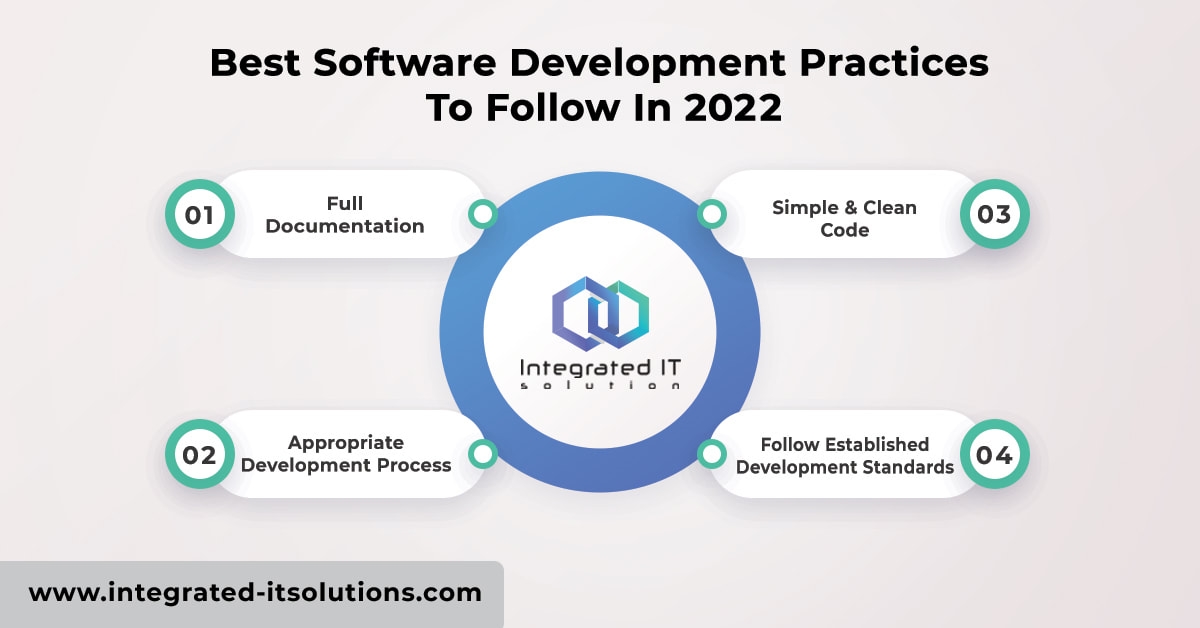Guidelines and principles are designed for the betterment of people. They are derived from experience of previous attempts and results to improve the standard of product and process. They help us to maintain the standard of our product and avoid any mistake or error. Software Development also follows certain guidelines and best practices that every programmer must follow to ensure the quality of the product. Software development is a thorough project that consists of many modules and integrations.
Different phases of the SDLC incorporate the delivery of the desired software product. The development of software is a very complex and daunting task as the developers come face to face with two different challenges. First, they have to understand the user requirements and then have to translate it into a working product. The strict enforcement of these guidelines and best practices greatly enhances the quality of software development services.
In this blog we are going to shed light on seven important things that can make or break your software development strategy:
1. Version Control System
The continuous development practice of software involves the activity of correct coding. Using version control systems (VCS) can considerably enhance code efficiency. This happens by enabling developers to keep track of variations and coordinate with others in real time.
However, this practice of persistently tracking and handling changes to software code is necessary. Especially when the whole development team is focused on building one software together. Adaptation to version control systems such as Git are essential tool for software development.
2. Full Documentation
Documentation is a very critical and beneficial aspect of the process of software development. It will help you to make your code more readable and efficient in the long run. The process of documentation seems to be a very hectic and time-consuming activity. It will help you revisit the code for changes and maintenance after the development of the product. Documentation will help you to increase the transparency of your project and ease of tracking any changes or flaws in your system.
3. Appropriate Development Process
Software development is a highly sophisticated and technical process. There are different methodologies or approaches to build the software as per client requirements. These methodologies and approaches are also known as the Software Development Life Cycle that lays down the foundation of the development process.
The selection of the right methodology and development process helps to achieve many targets. It helps both developers and clients to carefully assess, analyze, and assign practical deadlines and structures for product development. In SDLC we have many options to follow according to the requirements and nature of our project requirements. The software industry commonly uses development methodologies such as Waterfall, iterative, and agile models.
4. Simple & Clean Code
Simple and clean code has nothing to do with the functionality of the product. It also does not affect the performance of the software product. Moreover, it helps to increase the readability of code and reduces the time of development. It will be easier to sort out a bug or problem in clean code than poorly written code.
Code written without any discipline and unstructured manner becomes a mess to deal with in the future. In addition, any programmer can easily review, inspect, and update simple code without any special assistance. It increases productivity and allows various teams and persons to work together effortlessly on development projects.
5. Avoid Technical Debt
Technical debt happens when there is an intentional use of less-than-stellar coding in the development stages. This is done to achieve a faster turnaround. Developers often go for this tray to speed up the software development process from regular to completion. Continuous technical reviews help in identifying functional errors in the beginning period of software development
Perhaps, these practices not only optimize the quality of the software application but also improve the team’s performance. Whether the code is maintainable or requires continuous back-end support is also planned at the same time.
6. Continuous Integration
One of the best practices in software development are continuous integration (CI) and continuous deployment (CD). These are a modern software development practice in which incremental code changes are persistently made for quality and reliability. These both practices ensure that the developed software is deployed in an efficient manner. CI helps the owner of software to keep aware of the latest options in the testing phase of development.
7. Follow Established Development Standards
Software development companies and individuals must try to follow proper international and recommended standards in the development process. Moreover, these standards ensure product quality and help build client trust. One must obey and comply with international standards such as ISO certifications and various other development standards.
Final Thoughts
If followed properly, these seven software development practices aid in producing optimum software products. They ensure an optimal way to work, enabling customers to get maximum benefit out of the product. Perhaps, software is made to make workflows easier for people in every sector.
When developing software it is important to adhere to compliance standards and guidelines. Whether it’s the planning stage or the final testing phase of the software, the developers must perform their tasks with utmost care. From checking code reviews to running unit tests everything must be handled with efficiency or positive results in development.
Looking to develop a software product to excel in the marketing industry? Partner with Integrated IT Solutions—your trusted provider for custom software design and development. Together, we can achieve high-quality solutions tailored to your needs.




